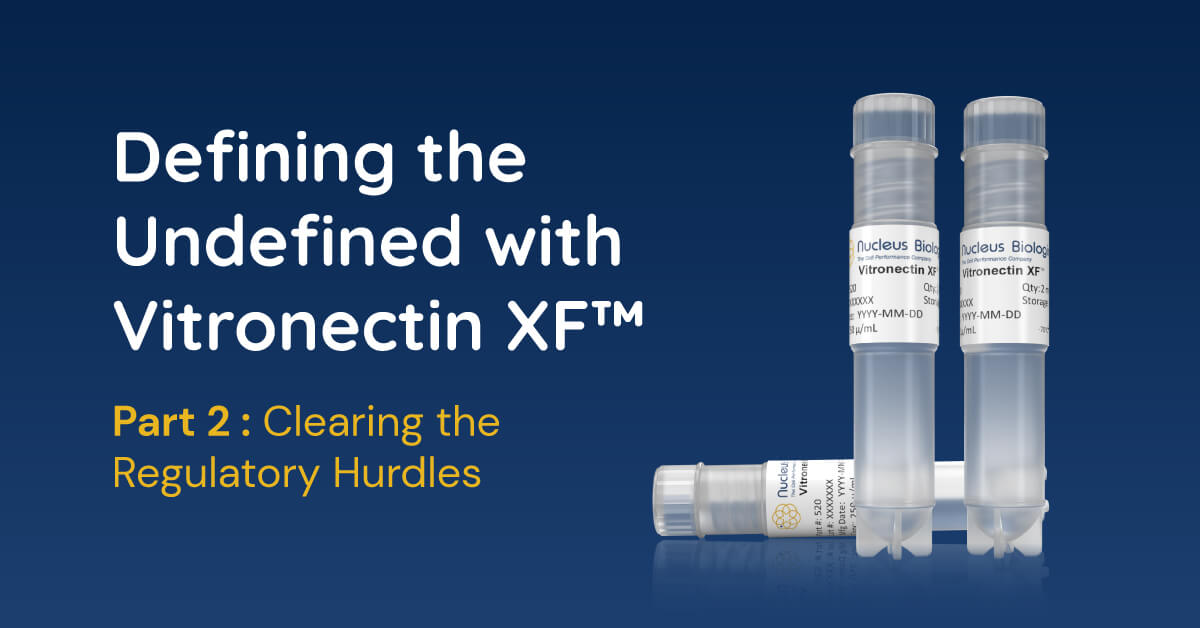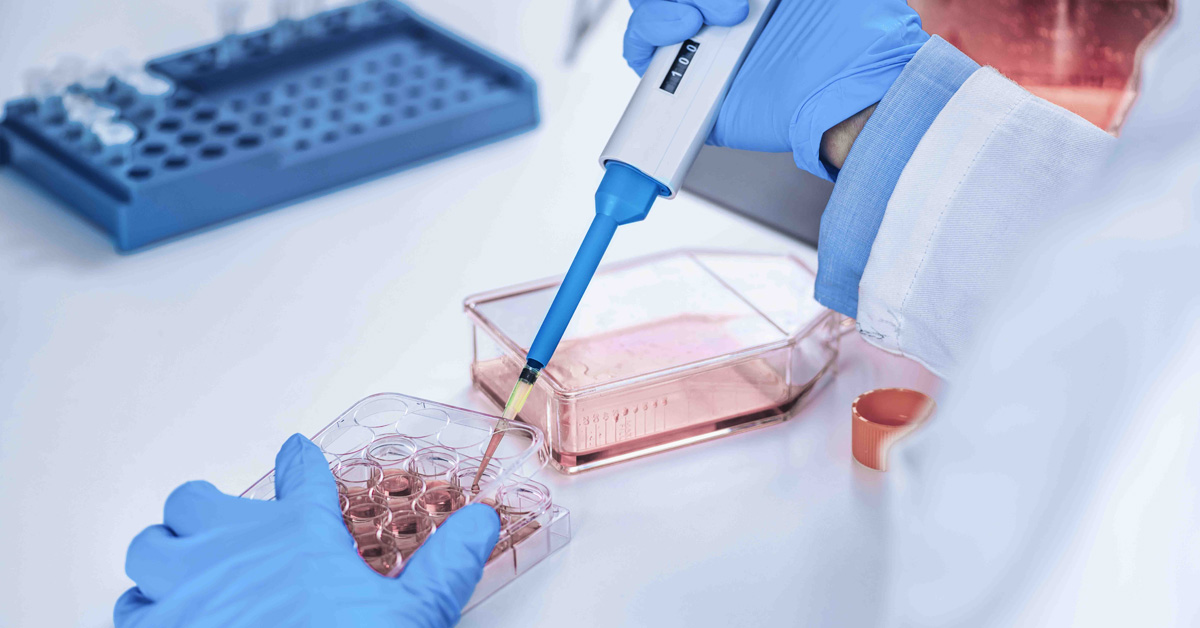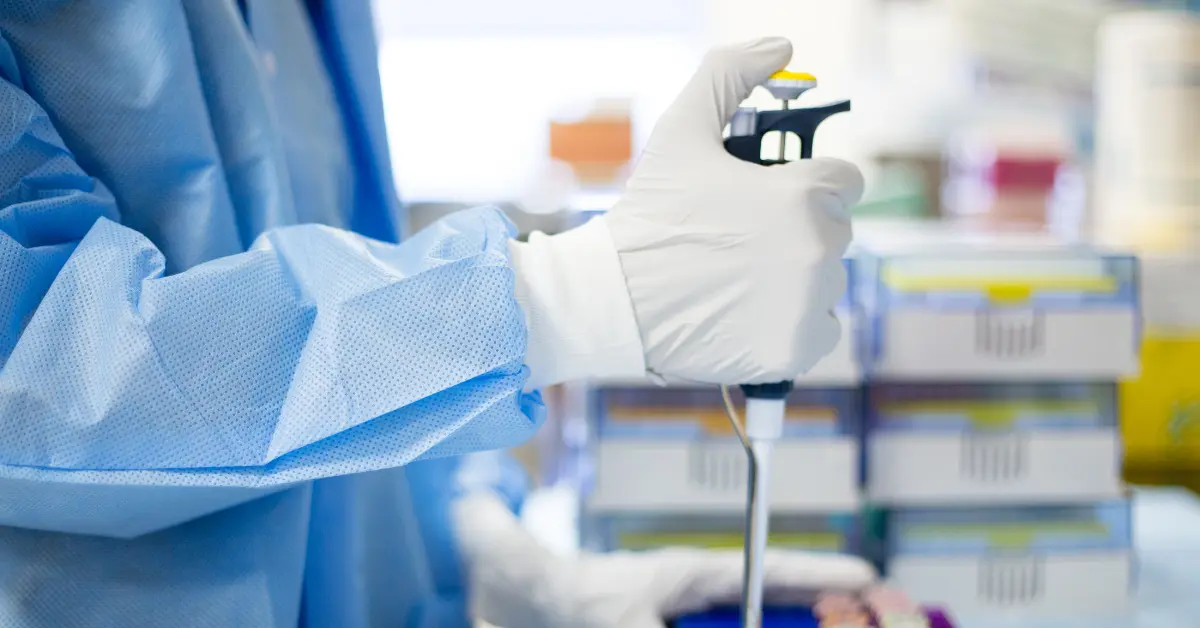Clearing the Regulatory Hurdles
Defined single component ECM gels have distinct advantages for stem cell therapies, improving patient safety and accelerating regulatory approval.
Last week, we looked at the evolution in cell culture for mesenchymal (MSC) and induced pluripotent stem cells (iPSC) and saw how Vitronectin XF, a recombinant cell attachment factor, is bringing standardization to stem cell production. In Part 2 of this 3-part blog series, Defining the Undefined with Vitronectin XF, we discuss jumping the regulatory hurdles with single component ECMs.
Obtaining FDA approval for an investigational new drug (IND) is required prior to first use in human patients, typically the start of Phase 1 clinical trials. In order to meet the requirements for IND, the company must show the proposed therapeutic is safe and efficacious in animal models, and that it can be manufactured consistently across at least three production lots. It is these issues of consistency in manufacturing and product safety that are impeded when the manufacturing process includes poorly defined and inconsistent materials. These issues can cause lengthy delays in obtaining an IND, require costly and time-consuming additional studies at the request of the regulatory body, and at worst, result in rejection of the IND application entirely.
Single Component Extracellular Matrix (ECM) Gels for Accelerated IND Approval
Vitronectin XF™ offers a xeno-free, single component, cell attachment factor as an alternative to mixed ECM gels. This consistent, defined growth matrix for therapeutic stem cells addresses the regulatory concerns with mixed ECM gels such as Matrigel®, Cultrex®, ECMatrix™, and Geltrex™.
Vitronectin functions to promote cell proliferation, maintain pluripotency, and to support normal colony morphology for MSC and iPSCs. Vitronectin XF is a xeno-free ECM protein that supports serum-free and feeder-free conditions. This recombinant ECM gel is fully glycosylated and human cell derived, containing the full length human vitronectin sequence fused to a human immobilization domain.
Numerous published studies have demonstrated the utility of defined recombinant vitronectin to support human stem cell propagation and maintain pluripotency.(1,2)
You can learn why Vitronectin XF is the matrix of choice for therapeutic stem cell culture on the Nucleus Biologics website. In the next blog in this series, we will help you get attached to Vitronectin XF by delving into its performance data against a commercially available mixed ECM gel for the propagation and maintenance of iPSCs.
References
- Braam SR et al. Recombinant vitronectin is a functionally defined subxstrate that supports human embryonic stem cell self-renewal via alpha v beta 5 integrin. Stem Cells 2009 26(9): 2257–65.
- Chen G et al. Chemically defined conditions for human iPSC derivation and culture. Nature Methods 2011 8(5): 424–9.




